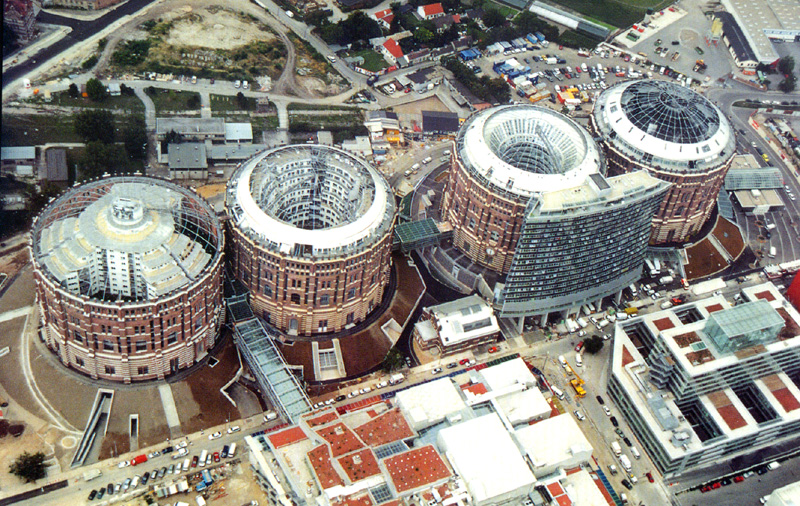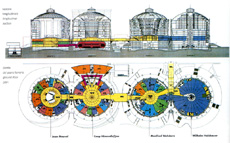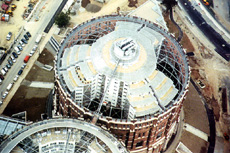|
|
| Overview of the new Building | ||||
| . | ||||
| . | ||||
|
This multi use project reused the external facades of the four gasometers as they are not just the symbol of Simmering, but also the whole city silhouette of Vienna. They are true monuments and landmarks in the cityscape. Therefore total demolition of the buildings was avoided and less demolition waste was generated. The restoration work showed that the external facades were in poor conditions. The top sections of the brick piers needed to be taken down and rebuilt. Reuse of the original material from the brick piers was not possible as the mortar which had been used was harder than the bricks and therefore impossible to be removed without damaging the bricks. Each gasometer approximately needed one thousand replacement bricks. Four architects won the competition in 1995, Jean Nouvel, Coop Himmelb(l)au, Manfred Wehdorn and Wilhelm Holzbauer, with a different interpretation of each gasometer. Jean Nouvel has created a large indoor plaza with a translucent roof playing with reflections, refractions and transparencies of the old and the new. Coop Himmelb(l)au added a new 22 storeys building to the existing one. Manfred Wehdorn created an indoor garden and an eco-friendly designed terraced structure. Wilhelm Holzbauer occupied the center of the existing building with lift and stairs, from which three compact sections were divided by indoor gardens penetrating the perimeter of the existing building. The concept of mixed-use building creates a 24 hours occupancy and activity in the gasometers with inhabitants working, living, and entertaining. |
||||
| . | ||||
| References | ||||
| . | ||||
|
||||
| . | ||||
| . | ||||
| Jean Nouvel Gasometer | ||||
| . | ||||
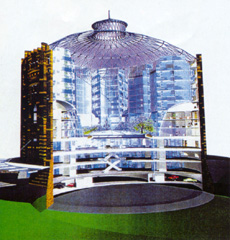
|
||||
| . | ||||
| . | ||||
| Coop Himmelb(I)au Gasometer | ||||
| . | ||||
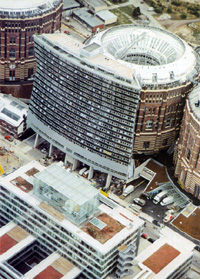
|
||||
| . | ||||
| . | ||||
| Manfred Wehdorn Gasometer | ||||
| . | ||||
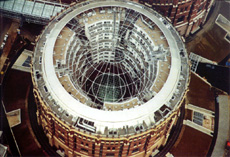
|
||||
| . | ||||
| . | ||||
| Wilhelm Holzbauer Gasometer | ||||
| . | ||||
| . | ||||
